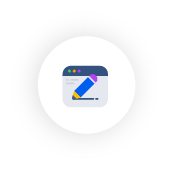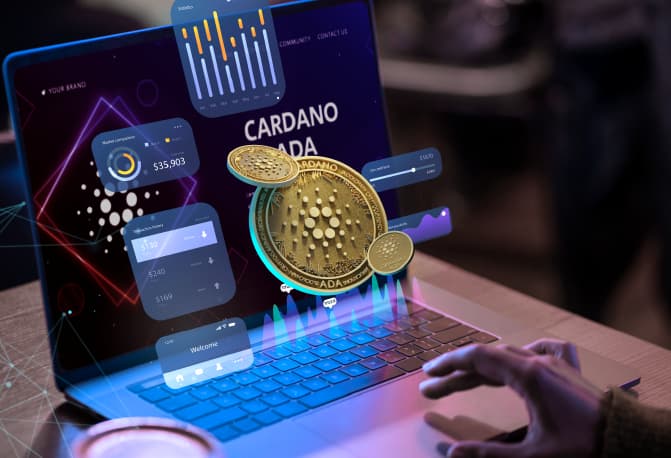Decentralized finance, also known as DeFi, is a new way to earn, save, and invest your money without relying on traditional financial institutions like banks or brokerages. Instead of trusting a centralized authority to manage your money, decentralized finance is built on the principle of trustless peer-to-peer transactions powered by cryptography and blockchain technology.
Table Of Contents:
What Is Decentralized Finance?
With Decentralized Finance, you can do everything from borrowing and lending cryptoassets to earning interest on your digital assets. And because decentralized finance is still in its early stages, there are a lot of opportunities to get involved and earn yield from some of the most innovative protocols in the space.
In the decentralized finance world, your cryptoassets are your own. You alone have the keys to your wallet and no one can tell you what to do with your money. This makes decentralized finance a completely different beast from traditional finance, so it’s often referred to as the “Wild West” of crypto.
While there are many risks associated with DeFi projects, there are also a lot of potential rewards. If you’re thinking about getting involved in decentralized finance, this guide has everything you need to know to get started.
This beginner’s guide to decentralized finance will cover some of the most popular DeFiprotocols and explain how you can start earning yield on your crypto.
Traditional Financial System vs. DeFi Financial System
The traditional financial system is centralized, relying on third-party intermediaries to function. This includes banks, brokerages, and other financial institutions that serve as middlemen between savers and borrowers.
Because these intermediaries are central control points, they can be subject to corruption, fraud, or mismanagement. They can also charge high fees for their services.
In contrast, decentralized finance is built on the principles of transparency, security, and immutability provided by blockchain technology. This allows DeFi protocols to offer similar financial products and services without central intermediaries.
Because decentralized finance is still in its early stages, there are a lot of opportunities to get involved and earn yield from some of the most innovative protocols in the DeFi space.
Open Financial System
One of the most critical aspects of DeFi is that it is an open financial system. This means anyone with an internet connection can access decentralized applications, or dApps, to do everything from buying, selling, and transferring crypto to earning interest on their digital assets.
Because DeFi is open and permissionless, it represents a significant shift in how we think about financial services. In the past, you needed to go through a bank or other financial institution to access primary financial products and services. But with DeFi, you can transact directly with others on the network without going through a middleman.
This makes it easier for you to access financial products and services, but it also makes it more affordable. Because no middlemen are taking a cut of your transactions, you can save money on fees. And because anyone can build on DeFi protocols, we are likely to see an explosion of new and innovative financial products and services in the coming years.
Key Concepts in Decentralized Finance
If you’re new to Decentralized Finance, there are a few key concepts you should understand before getting started.
Asset Management:
With DeFi protocols, you can manage your assets in a way that suits your needs. For example, you can lock up your crypto in a smart contract to earn interest on it or use it as collateral for a loan.
Asset Ownership:
In the traditional financial system, your assets are owned by a central authority like a bank. But in DeFi, you are the sole owner of your assets. This means you have complete control over your money and can do with it what you please.
Asset Interoperability:
DeFi protocols are built on the principle of asset interoperability. You can use different assets on different protocols to do everything from borrowing and lending to earning interest.
For example, you could use Bitcoin as collateral for a loan on a decentralized exchange or use Ethereum to earn interest on your digital assets.
Smart Contract:
Smart contracts are self-executing contracts written in code and stored on the blockchain. With DeFi, the smart contract is used to automate financial transactions.
For example, you could use a smart contract to automatically lend your digital assets to another user on the network or borrow assets from someone else.
Blockchain:
A blockchain is a distributed ledger that records all transactions on a network. DeFi protocols are built on blockchains like Ethereum and Bitcoin.
Decentralized Exchange
A DEX is a cryptocurrency exchange that does not rely on a third party to hold users’ funds. Instead, trades are executed directly between users through an automated process. DEXes are often built on top of decentralized protocols like 0x or Kyber Network, which provide the infrastructure for peer-to-peer trading.
DEXes have a number of advantages over centralized exchanges. DEXes are harder to hack because they don’t hold users’ funds in centralized wallets. DEXs also offer more privacy because they don’t require users to go through Know Your Customer (KYC) or Anti-Money Laundering (AML) procedures.
How to Use a Decentralized Exchange
DEXs are a new type of cryptocurrency exchange that allow users to trade directly with each other without the need for a third party. This means that there is no central point of control or custody, which makes them much more resistant to hacking and fraud. Because DEXs are still in their early stages, they can be tricky to use. Here’s a step-by-step guide on how to use one.
First, you will need to create an account on the decentralized exchange of your choice. Next, you will need to fund your account with the cryptocurrency you want to trade. Once your account is funded, you can start placing orders to buy or sell coins.
Decentralized exchanges typically match orders automatically, so you don’t have to worry about finding a buyer or seller. Once your order is filled, you can withdraw your coins to a wallet of your choice.
Decentralized Loan
A decentralized loan is a type of financial transaction that occurs without the need for a central banking institution. Typically, decentralized loans are made between individuals or groups using peer-to-peer lending platforms. This type of loan arrangement has a number of advantages over traditional loans from banks.
First, decentralized loans can often be obtained more quickly, as there is no need to go through a lengthy application process. Second, decentralized loans typically have lower interest rates since there is no need to cover the costs of running a central bank.
Finally, decentralized loans can be more flexible, as borrowers and lenders agree to their terms and conditions. Overall, decentralized loans offer a number of benefits for both borrowers and lenders.
Decentralized Prediction Markets
A decentralized prediction market is a type of market that allows users to trade on the outcome of events.
Decentralized prediction market platforms have a number of advantages over traditional markets:
- They are often more accurate, allowing for the aggregation of many different opinions
- They are more efficient as they do not require intermediaries
- They are transparent, as all trades are recorded on the blockchain
How to Use a Decentralized Prediction Market
Decentralized prediction markets can be used to predict the outcome of any event. To use a prediction market, you first need to find a market trading on the event you want to predict. Next, you need to buy or sell shares in the market.
If the event you predicted happens, then you will make a profit. If the event does not occur, then you will lose money.
Decentralized Reserve Bank
The Decentralized Reserve Bank is a proposed financial institution built on the Ethereum blockchain. The bank would offer various services, including loans, savings accounts, and other financial products.
The bank uses smart contracts to enforce its rules and to match lenders with borrowers. In addition, the bank would offer a lending pool, allowing users to earn interest on their cryptoassets.
The Most Popular DeFi Applications
Now that we’ve covered some of the key concepts in DeFi, let’s look at some of the most popular protocols and DeFi applications in the space.
MakerDAO
MakerDAO is a decentralized finance platform that offers users access to decentralized stablecoins, loans, and other financial products. The platform is built on the Ethereum blockchain and uses smart contracts to enforce its rules. MakerDAO is unique because it uses airdrops to distribute its native currency, Dai, to users. It allows users to earn Dai by participating in the platform’s governance or by providing collateral for loans.
MakerDAO also offers a lending pool, allowing users to earn interest on their Dai by lending it to borrowers. Overall, MakerDAO is a versatile platform that gives users a wide range of financial products and services.

Compound
Compound allows users to earn interest on their cryptoassets. The platform uses smart contracts to enforce its rules and match lenders with borrowers. Compound currently supports a range of popular cryptoassets, including Ethereum, Bitcoin, and Dai.
Users can also lock up their crypto in Compound’s lending pool and earn interest on their holdings. In addition, Compound offers a DEX, which allows users to trade cryptoassets directly from their wallets.
dy/dx
Dy/dx allows users to trade Ethereum-based tokens. The platform uses smart contracts to enforce its rules and match buyers with sellers. Dy/dx also offers a lending pool, allowing users to earn interest on their cryptoassets.
In addition, dy/dx allows users to margin trade, which means they can borrow funds from the platform to trade with. Overall, dy/dx is a versatile platform that offers users a wide range of financial products and services.
Uniswap
Uniswap allows users to trade Ethereum-based tokens. Uniswap also offers a lending pool, which will enable users to earn interest on their cryptoassets.
In addition, Uniswap allows users to margin trade, which means they can borrow funds from the platform to trade with. Overall, Uniswap is a versatile platform that offers users a wide range of financial products and services.
Augur
Augur allows users to trade on the outcomes of events. The platform uses smart contracts to enforce its rules and match buyers with sellers. Augur also offers a lending pool, allowing users to earn interest on their cryptoassets.
In addition, Augur allows users to margin trade, which means they can borrow funds from the platform to trade with. Overall, Augur is a versatile platform that offers users a wide range of financial products and services.
0x
0x allows users to trade Ethereum-based tokens. The platform uses smart contracts to enforce its rules and match buyers with sellers. 0x also offers a lending pool, allowing users to earn interest on their cryptoassets.
In addition, 0x allows users to margin trade, which means they can borrow funds from the platform to trade with. Overall, 0x is a versatile platform that offers users a wide range of financial products and services.
PoolTogether
PoolTogether allows users to pool their money together and earn interest on their holdings. PoolTogether currently supports a range of popular cryptoassets, including Ethereum, Bitcoin, and Dai.
In addition, PoolTogether offers a lending pool, which allows users to earn interest on their cryptoassets.
Fulcrum
Fulcrum allows users to earn interest on their cryptoassets. The platform uses smart contracts to enforce its rules and match lenders with borrowers. Fulcrum currently supports a range of popular cryptoassets, including Ethereum, Bitcoin, and Dai.
In addition, Fulcrum offers a lending pool, which allows users to earn interest on their cryptoassets.
Cream
The Cream allows users to earn interest on their cryptoassets. The platform uses smart contracts to enforce its rules and match lenders with borrowers. Cream currently supports a range of popular cryptoassets, including Ethereum, Bitcoin, and Dai.
In addition, Cream offers a lending pool, which allows users to earn interest on their cryptoassets.
Radar Relay
Radar Relay is a decentralized exchange that allows users to trade Ethereum-based tokens. The platform uses smart contracts to enforce its rules and match buyers with sellers. Radar Relay also offers a lending pool, allowing users to earn interest on their cryptoassets.
In addition, Radar Relay allows users to margin trade, which means they can borrow funds from the platform to trade with. Overall, Radar Relay is a versatile platform that offers users a wide range of financial products and services.
Synthetix
Synthetix is a decentralized synthetic asset platform that allows users to trade various assets. The platform uses smart contracts to enforce its rules and match buyers with sellers. Synthetix also offers a lending pool, allowing users to earn interest on their cryptoassets.
In addition, Synthetix allows users to margin trade, which means they can borrow funds from the platform to trade with. Overall, Synthetix is a versatile platform that offers users a wide range of financial products and services.
These are just a few of the many decentralized exchanges currently available. Each platform offers its own unique set of features and services, so be sure to research each one carefully before deciding which one is right for you.
How to Start Earning Yield on Your Crypto

Now that you know about some of the most popular decentralized finance protocols, let’s look at how you can start earning yield on your crypto.
The first step is to choose a DeFi protocol that you’re interested in and create an account. For example, if you want to start lending your crypto on Compound, you’ll need to create a Compound account and deposit your crypto into the platform.
Once you’ve created an account and deposited your crypto, you can start earning interest on your holdings. In most cases, all you need to do is click a button to activate the interest-earning feature.
For example, on Compound, you can click the “Supply” button to start earning interest on your crypto.
It’s important to remember that you’re responsible for your account and keeping your private keys safe. This means that you should never share your private keys with anyone. In addition, you should always carefully review the terms and conditions of any platform before you start using it.
By following these steps, you can start earning yield on your crypto without worrying about the risks associated with traditional financial products.
What Are Some Risks Associated With DeFi?
While DeFi offers several advantages over traditional financial systems, it also comes with risks.
First, because decentralized applications are built on Ethereum, they are subject to the same scalability issues that plague the Ethereum network. DeFi apps may have trouble handling large amounts of traffic, leading to delays or downtime.
Secondly, because DeFi apps are still new and relatively untested, they are more prone to hacks and exploits. There are more opportunities for attackers to find and exploit vulnerabilities in code. It is essential to be aware of the risks before using any DeFi app.
Finally, DeFi apps may be subject to regulation in the future. DeFi apps challenge the existing financial system, leading to pushback from authorities.
Overall, DeFi is a promising new area with a lot of potential. However, it is important to be aware of the risks before using any DeFi app.
Invest in Crypto
Decentralized finance protocols offer a safe and easy way to earn interest on your crypto. So, why not start using them today?




























